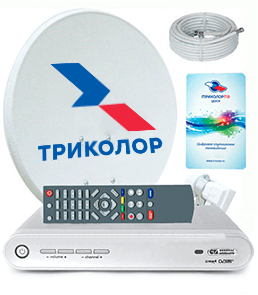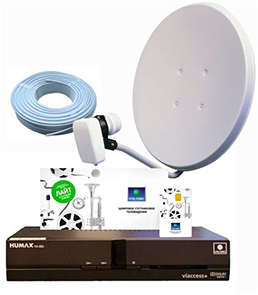What Is a Dividend and How Do They Work?
In better terms, this is regarded as a practice to boost investor confidence in the business. Therefore, for the purpose of both taxes and reporting, the dividends are never classified as expenses. Whether paid in cash or in stock, dividends generally are announced, or «declared,» by a company and are then paid out on a quarterly basis at a specified date. For example, a company might pay a dividend of .25 cents per share, payable 60 days from the date of the announcement. In simple terms, a dividend is a distribution of a portion of a company’s profits paid out to its shareholders.
Dividends can be paid at a scheduled frequency, such as monthly, quarterly, or annually. For example, Walmart Inc. (WMT) and Unilever (UL) make regular quarterly dividend payments. How much an investor can expect to earn in dividends will depend on a few different factors, including how many shares you own, the company you’ve invested in, and how often they decide to pay dividends.
- These funds are available to a range of budgets, hold many dividend stocks within one investment and distribute dividends to investors from those holdings.
- Cash flow refers to the inflows or increases as well as the outflows or reductions in cash.
- In real estate investment trusts and royalty trusts, the distributions paid often will be consistently greater than the company earnings.
- It can also be an income stream for some investors, depending on the kind of assets they invest in.
This crucial difference demonstrates why dividends do not qualify as expenses. The formulas for the dividend per share (DPS), dividend yield, and dividend payout ratio are shown below. Financial websites or online brokers will report a company’s dividend yield, which is a measure of the company’s annual dividend divided by the stock price on a certain date. The effect of a dividend payment on share price is an important reason why it can sometimes be desirable to exercise an American option early.
Payment date – the day on which dividend cheques will actually be mailed to shareholders or the dividend amount credited to their bank account. Cash dividends are considered assets because they increase the net worth of shareholders by the amount of the dividend. On the ex-dividend date, it’s adjusted by $2 and begins trading at $61 at the start of the trading session on the ex-dividend date, because anyone buying on the ex-dividend date will not receive the dividend. When a company pays a dividend, it has no impact on the Enterprise Value of the business. However, it does lower the Equity Value of the business by the value of the dividend that’s paid out.
Impact of a Dividend on Valuation
Cash dividends reduce the size of a company’s balance sheet and its value since the company no longer retains part of its liquid assets. In either case, cash dividends or stock dividends, the company announces or declares them, which is done on a quarterly basis in most cases. In some cases, the board of directors may decide not to declare dividends quarterly. The cash dividends are recorded as in the company’s statement of changes at the end of the year, by showing a change in the shareholder equity.
These are the most common types of dividends and are paid out by transferring a cash amount to the shareholders. These dividends are usually paid on a quarterly basis, although some companies may opt for a monthly, semiannual, or one-time lump-sum payment. The reason to perform share buybacks as an alternative means of returning capital to shareholders is that it can help boost a company’s EPS. By reducing the number of shares outstanding, the denominator in EPS (net earnings/shares outstanding) is reduced and, thus, EPS increases. Managers of corporations are frequently evaluated on their ability to grow earnings per share, so they may be incentivized to use this strategy.
Dividends do not represent operating costs and therefore cannot be written off. Companies must pay applicable income taxes before making after-tax dividend distributions. Throughout this guide, I’ll walk you through everything you need to know about dividends, from their definition and different types to how they are recorded in financial statements and their tax implications.
How Do Dividends Impact Stock Prices?
For the joint-stock company, paying dividends is not an expense; rather, it is the division of after-tax profits among shareholders. Retained earnings (profits that have not been distributed as dividends) are shown in the shareholders’ equity section on the company’s balance sheet – the same as its issued share capital. Cash dividends are the most common form of payment and are paid out in currency, usually via electronic funds transfer or a printed paper check. Such dividends are a form of investment income of the shareholder, usually treated as earned in the year they are paid (and not necessarily in the year a dividend was declared). Thus, if a person owns 100 shares and the cash dividend is 50 cents per share, the holder of the stock will be paid $50. Dividends paid are not classified as an expense, but rather a deduction of retained earnings.
Types of Dividends
Dividend payments reflect positively on a company and help maintain investors’ trust. When a company doesn’t have sufficient funds to issue dividends in the near future, it’ll issue scrip dividends, which is essentially a promissory note that promises to pay shareholders at a later date. A dividend’s value is determined on a per-share basis and is global accounting standards to be paid equally to all shareholders of the same class (common, preferred, etc.). A company’s history of dividends is an important factor in many investors’ decision-making process. Dividends tend to be most prized by relatively conservative investors who buy stocks for the long term, and by investors who value the regular income they provide.
The Missing Link: Statement of Retained Earnings
Once a business earns profits, it can invest the money back into the business, save it for emergency expenses, buy back stocks from the shareholders, or pay dividends to shareholders. You can determine when and how much you should expect to receive in dividends by paying close attention to the dividend yield, declaration, ex-dividend, and payment dates. It’s important to keep in mind that you won’t always receive a dividend payment. As you can see, the dividend payment is not recorded as an expense on the income statement. Instead, it is a distribution of profits to shareholders that is reflected in the statement of retained earnings and the balance sheet.
Where do dividends appear in the financial statements?
Just as dividends probably have a special place in shareholders’ hearts, they have a special place in the world of accounting. However, it is also possible that the companies may sometimes not be able to pay out dividends due to a difficult financial position. I hope this comprehensive guide has shed light on the age-old question – are dividends really an expense? Proper classification as distributions rather than expenses makes dividends a unique component of share ownership. The IRS treats dividends as profit distributions, not direct operating costs or deductions. The sector in which the company operates is another determinant of the dividend yield.
Are Dividends an Expense or Revenue? (Explained)
When a company generates a profit and accumulates retained earnings, those earnings can be either reinvested in the business or paid out to shareholders as a dividend. The annual dividend per share divided by the share price is the dividend yield. Dividends, whether cash dividends or stock dividends are not written down as an expense in the company’s financial statements. This is because they do not affect the profit in the income statement of the company. Both cash and stock dividends lower retained earnings, but only cash dividends reduce total assets and cash balances.
For example, Greece and Slovakia have a lower tax on dividend income for shareholders, while dividend gains are tax exempt in Hong Kong. Companies structured as master limited partnerships (MLPs) and real estate investment trusts (REITs) require specified distributions to shareholders. Funds may also issue regular dividend payments as stated in their investment objectives. The company’s board of directors decides to distribute a portion of this income to its shareholders in the form of dividends.








